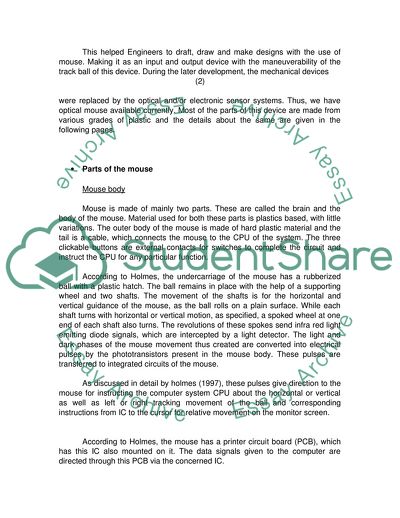Cite this document
(Plastic Parts for a Mouse Report Example | Topics and Well Written Essays - 1750 words, n.d.)
Plastic Parts for a Mouse Report Example | Topics and Well Written Essays - 1750 words. https://studentshare.org/information-technology/1721970-plastic-parts-for-a-mouse
Plastic Parts for a Mouse Report Example | Topics and Well Written Essays - 1750 words. https://studentshare.org/information-technology/1721970-plastic-parts-for-a-mouse
(Plastic Parts for a Mouse Report Example | Topics and Well Written Essays - 1750 Words)
Plastic Parts for a Mouse Report Example | Topics and Well Written Essays - 1750 Words. https://studentshare.org/information-technology/1721970-plastic-parts-for-a-mouse.
Plastic Parts for a Mouse Report Example | Topics and Well Written Essays - 1750 Words. https://studentshare.org/information-technology/1721970-plastic-parts-for-a-mouse.
“Plastic Parts for a Mouse Report Example | Topics and Well Written Essays - 1750 Words”. https://studentshare.org/information-technology/1721970-plastic-parts-for-a-mouse.


